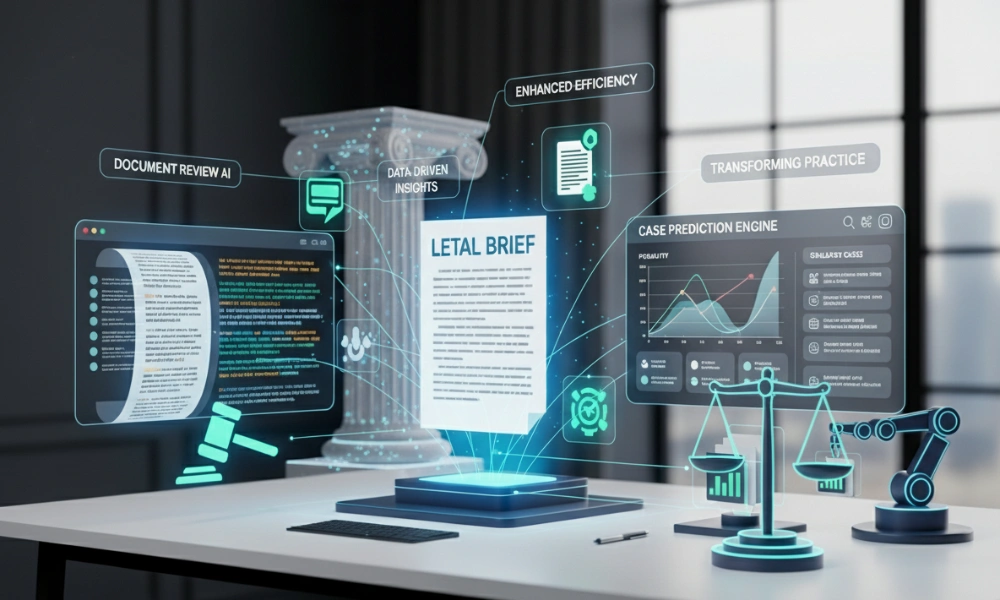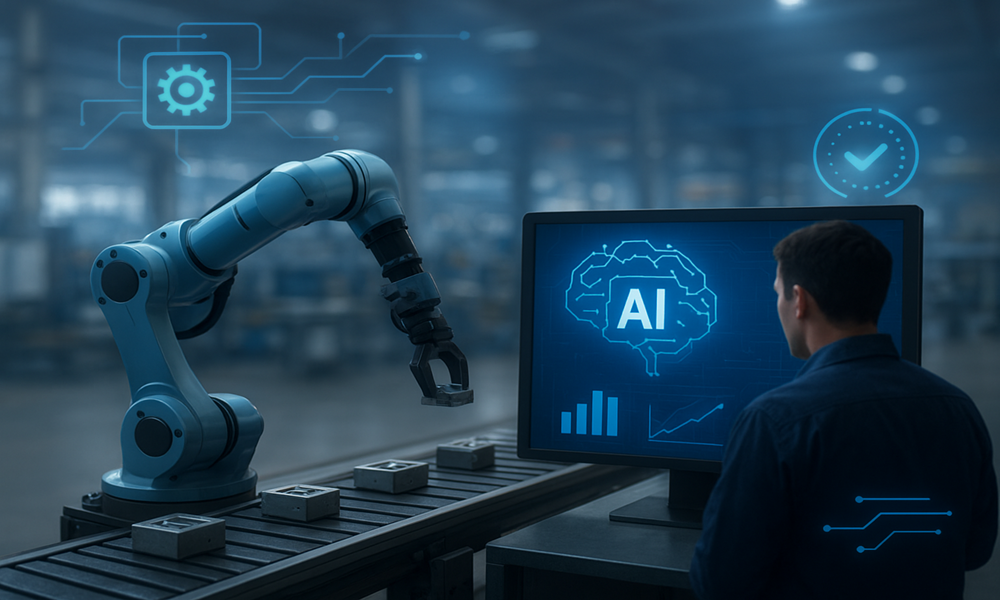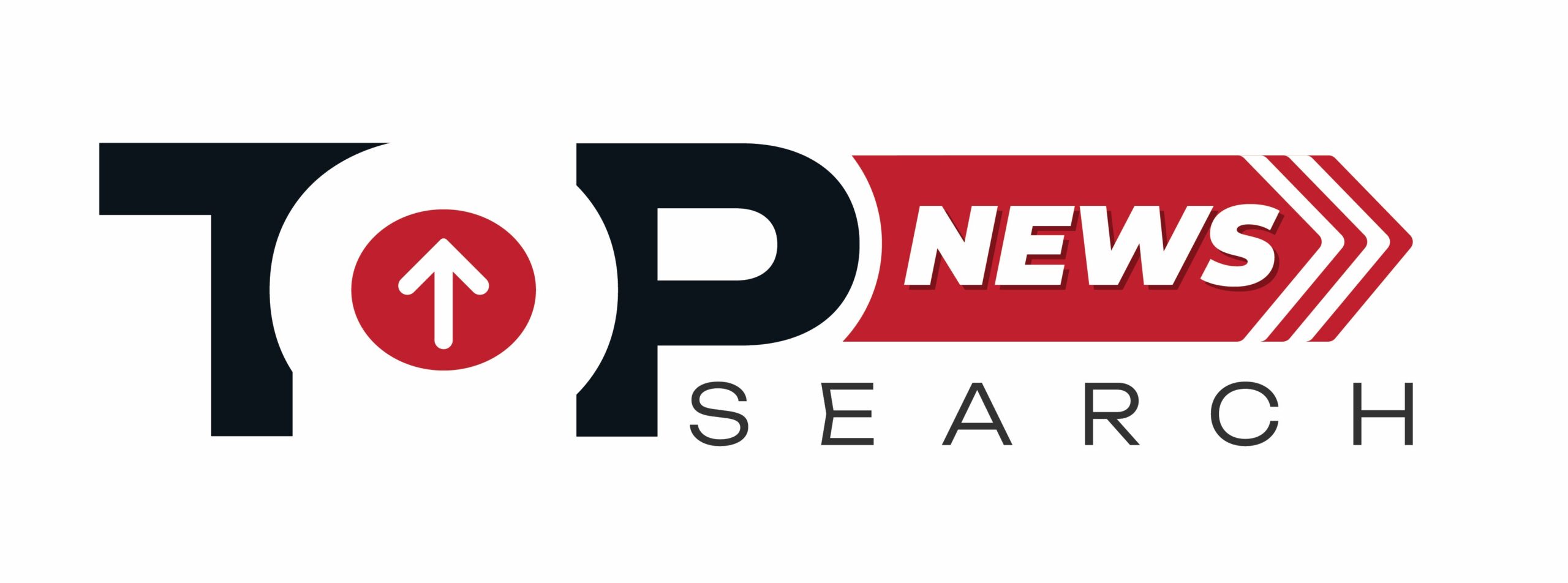
Top AI Tools for Lawyers: How Legal AI is Transforming Practice in 2025
- September 12, 2025
- Top Search
- 3:23 pm

In 2025, legal AI is transforming US law practice. Tools like ROSS Intelligence, Casetext CARA, LawGeex, and Kira Systems help lawyers research faster, review contracts accurately, predict case outcomes, and automate routine tasks—making legal work more efficient, cost-effective, and data-driven.
The US legal system is one of the most complex in the world, with millions of ongoing cases and an ever-growing need for efficiency and accuracy. Traditionally, lawyers spend countless hours on legal research, drafting contracts, and managing compliance manually. But in 2025, Artificial Intelligence (AI) is revolutionizing legal practice.
AI is no longer a futuristic concept—it’s integrated into law firm workflows, corporate legal departments, and solo practices. From AI-powered research platforms that scan thousands of case files in seconds to contract analysis tools that detect risky clauses instantly, legal AI allows lawyers to focus on strategy, client advocacy, and case outcomes.
In this blog, we explore the Top 10 AI tools for lawyers in the US, their key features, and most importantly, how and when to use them effectively.
Why AI Matters in the US Legal Sector
Massive workload – US courts see millions of filings annually, making research and case management time-intensive.
Time efficiency – AI reduces hours of research, drafting, and compliance monitoring to minutes.
Cost-effectiveness – Law firms can optimize billable hours and provide competitive pricing.
Consistency – AI ensures standardized, error-free drafting.
Data-driven decisions – Predictive analytics help lawyers anticipate litigation outcomes and make informed strategic choices.
Top 10 AI Tools for Lawyers in the US (2025 Edition)
1. ROSS Intelligence – AI Legal Research Assistant
Features:
Natural language query processing
Searches US federal and state case law databases
Summarizes relevant case law
Use Case: A litigation associate can quickly identify precedents for a motion, reducing research time from hours to minutes.
Best For: Litigators and research-heavy practices
2. Casetext CARA – Smarter Case Analysis
Features:
Analyzes uploaded documents to find relevant case law
Citation analysis and brief review suggestions
Use Case: Before filing a motion, a lawyer uploads the draft to CARA to uncover overlooked precedents.
Best For: High-volume litigation firms
3. LexisNexis Context – Predictive Analytics for Litigation
Features:
Judge and court analytics
Outcome prediction based on historical rulings
Use Case: Law firms can predict likely rulings and tailor litigation strategy for settlements or trials.
Best For: Litigation strategy planning
4. LawGeex – Contract Review Automation
Features:
AI reviews contracts for risky clauses and compliance
Integrates with corporate workflows
Use Case: An in-house counsel reviews NDAs and vendor agreements for hidden risks.
Best For: Corporate legal teams
5. Kira Systems – Due Diligence & M&A Contracts
Features:
Bulk contract analysis
Extracts key clauses and identifies anomalies
Use Case: During a merger, legal teams review hundreds of contracts in hours instead of weeks.
Best For: M&A, large law firms, corporate counsel
6. Luminance – AI-Powered Document Review
Features:
Detects anomalies, risks, and unusual clauses
Machine learning adapts to firm-specific practices
Use Case: Law firms handling large-scale due diligence automatically flag non-standard clauses.
Best For: Big law and corporate legal departments
7. Ravn ACE – Legal Knowledge Management
Features:
AI-powered search across internal documents and knowledge bases
Fast retrieval of past cases, memos, and templates
Use Case: Associates quickly find internal research or templates for drafting motions.
Best For: Law firms of all sizes
8. ThoughtRiver – Pre-Screening Contracts
Features:
Automated contract risk scoring
Highlights clauses needing human review
Use Case: Legal ops teams pre-screen client contracts before manual approval.
Best For: Legal ops and compliance teams
9. Premonition – Litigation Risk Analytics
Features:
Analytics on court outcomes, opposing counsel, and trends
Data-driven strategy insights
Use Case: Law firms assess settlement probabilities and case risks before trial.
Best For: Litigation-heavy practices
10. LawDroid – AI Legal Chatbot
Features:
Automates client intake and FAQ responses
Integrates with firm workflows and CRMs
Use Case: A law firm’s chatbot collects client information, freeing staff for high-value tasks.
Best For: Solo lawyers, small firms, and client engagement
When Should Lawyers Use These Tools?
Before filing a case: ROSS Intelligence, Casetext CARA, LexisNexis Context
During drafting: LawGeex, Kira Systems, Luminance, ThoughtRiver
For internal research & knowledge management: Ravn ACE
While monitoring litigation: Premonition, LexisNexis Context analytics
For client engagement and intake: LawDroid
Benefits of Using AI in Legal Practice
Speeds up research, drafting, and compliance
Reduces human errors and improves consistency
Cuts costs and optimizes billable hours
Provides data-driven insights for litigation strategy
Enhances client engagement through automation
Challenges and Limitations
Cost barriers: Premium AI tools may be expensive for small firms
Learning curve: Lawyers need training to use AI effectively
Coverage gaps: Some tools may not have fully updated databases
Human judgment required: AI cannot replace courtroom advocacy or nuanced legal reasoning
Conclusion
AI is no longer a luxury for US lawyers—it’s a necessity. From research and litigation strategy to contracts and client engagement, legal AI tools like ROSS Intelligence, Casetext CARA, LawGeex, and Kira Systems are transforming the practice of law. Firms and legal teams that adopt AI can work faster, reduce errors, and deliver better outcomes for clients, ensuring they remain competitive in 2025 and beyond.
FAQs
Legal AI automates research, contract review, and document drafting, saving time and improving accuracy for lawyers and law firms.
Yes, tools like LexisNexis Context and Premonition provide data-driven insights based on historical rulings, but human judgment is still essential.
LawGeex, Kira Systems, and Luminance help detect risky clauses, ensure compliance, and speed up contract review.
No, AI supports lawyers by automating routine tasks, but strategic decisions, courtroom advocacy, and client counsel still require human expertise.
Yes, many tools offer scalable solutions and trial versions, making AI accessible for firms of all sizes.

Recent Posts:


AI in Manufacturing: From Competitive Edge to Industry Need


